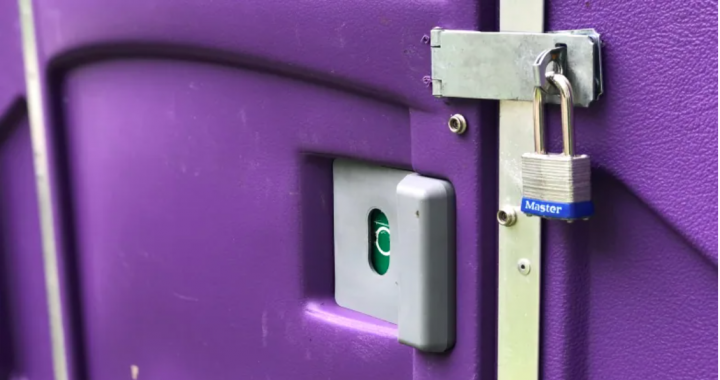Elias Visontay
The Guardian, Sunday 3, May 2020
Better building codes and some design innovation could greatly improve hygiene, experts say
Public health experts, designers and architects say the Covid-19 pandemic has exposed fundamental flaws in the design of public toilets that risk spreading a second wave of coronavirus, and possibly even new pandemics.
The pandemic has sparked calls for the introduction of building codes and design innovation for all future structures to comply with infection control measures, with greater input from disease specialists in construction projects that often see the design stage as a chance for cost cutting.
Some of the suggested innovations include a greater uptake of sensor taps, fully self-cleaning cubicles, designing exits that don’t require human contact, and having bathroom attendants.
Proponents of these ideas say they would improve hygiene by minimising the amount of exposure to potentially infected surfaces and also boost public confidence in the cleanliness of public conveniences, with some arguing the net effect would even be good for the post-pandemic economic recovery.
The World Health Organization has acknowledged the shortcomings of conventional public toilet design, distributing advice on safe hand washing that instructs users that in order to be protected from the virus, people should use a paper towel to turn off the tap after washing their hands.
In Australia, Brendan Murphy, the chief medical officer, on Friday foreshadowed that the public is “going to be washing our hands in a new way for the rest of our lives even beyond this virus”, even as the country begins easing tough social restrictions.
Peter Collignon, a professor of infectious diseases and microbiology at the Australian National University, says the surfaces of taps and doors are a problem in public bathrooms, particularly in relation to viruses shown to be present in faecal matter.
“The major way coronavirus is transmitted is via respiratory droplets, so you can catch it off surfaces that your hands touch … There are other ways, it can even carry in faeces too. About 60% of patients show that,” Collignon says.
“We need to have public bathrooms open up as lockdowns ease, but the more non-touch we have the better. Taps that you activate by sensor need to be considered.”
Collignon, who has previously advised WHO expert committees, recommends using hand sanitiser after exiting a bathroom, because washing hands in a public toilet often includes touching several surfaces such as taps and doors that could transmit viruses.
“It’s time for a rethink on lots of things, and bathrooms are one of them,” he says. “Covid-19 and rates of other respiratory viruses are all dropping as a result of our hand hygiene and distancing measures so far. For the next year we’re going to have to focus on Covid, but these measures could significantly reduce a lot of infections if we continue seriously with hand hygiene.”
Collignon says infection control is not a priority in building design, and more input is needed from health professionals.
“Infection control and protections should be as vital to bathroom design as fire safety. You can’t design anything these days without fire safety in mind, but when it comes to infection prevention, well, when you have to save some money, that often gets compromised.
“It’s about time we have a standard code for infection control when building. There’s a cost in not doing this.”
Ian Mackay, an associate professor of virology at the University of Queensland, says doors to public toilets should be re-examined to minimise the risk of touching a door surface, especially if a previous user did not wash their hands correctly.
“A non-contact exit would be ideal.”
Mackay argues health and architectural collaboration should be “further emphasised” when designing public bathrooms. “There are other known viruses whose faecal-oral spread could occur via bathrooms,” he says.
Sarah Bookman, who investigated the political and cultural implications of public toilets in her thesis for Auckland University, believes there are inherent design issues with the hygiene of these facilities that “can no longer be neglected”.
Bookman says entirely self-cleaning toilets that sanitise the cubicle when a door is shut could be installed in greater quantities by governments.
“It creates a dramatic gesture of cleaning, you can smell it, you can hear it, that process is going through it. I think those are going to be a real design feature in the future. Our current toilet practices are not sustainable.
“To have washing your hands designed around using a paper towel to turn the tap off. There’s going to have to be other solutions in the future … Using taps and flushes with lots of sensors will become more important after Covid.
Bookman, who has worked on public bathroom design at prominent New Zealand architecture firm Studio Pacific, says ensuring significant and visible hygiene improvements to bathrooms can even lead to a stronger post-pandemic economic recovery.
“The presence of an attendant is one example. It can be important for people to see public toilets and public areas constantly serviced.” Another clue that the bathroom has been cared for, she says, is to make soap dispensers transparent so users can see how much soap is inside.
As social restrictions are gradually lifted, Bookman says, people will be hesitant to treat public spaces as they previously did, and that in the case of public toilets, this will affect how much time they spend away from their home.
“If you’re not able to use public bathrooms, that limits your time outside … In order to get people back into public life, you want people to go out again. It’s good for the economics of the city.”
She says those who will rely on public bathrooms as lockdowns are eased are mostly those on lower incomes, essential workers and homeless people. “In cities with poor public bathroom facilities, people tend to go to a restaurant, especially in countries like the US, to use their bathroom. That’s just not a viable option, especially in a pandemic.”
Bathroom designers and health experts should “dissect every stage of using a public toilet and interrogate what solutions can be made around that to reduce touch”, she says.
“We’ve almost got this little opportunity from the pandemic where people are going to listen and going to change. What we do now to fix public bathrooms, people will actually follow.”



